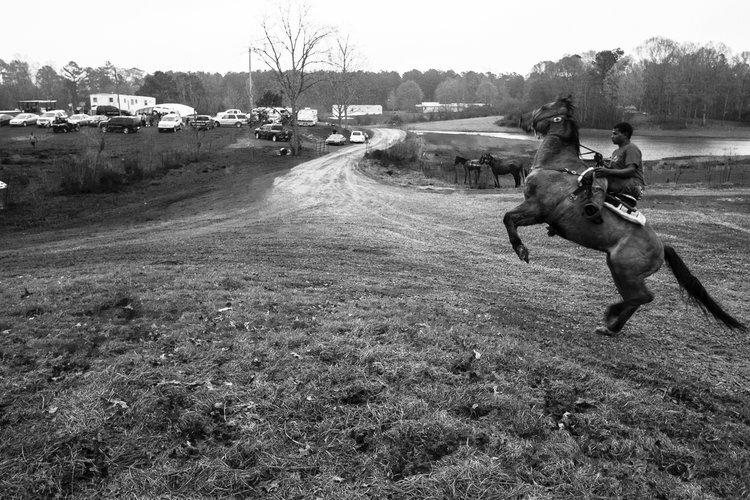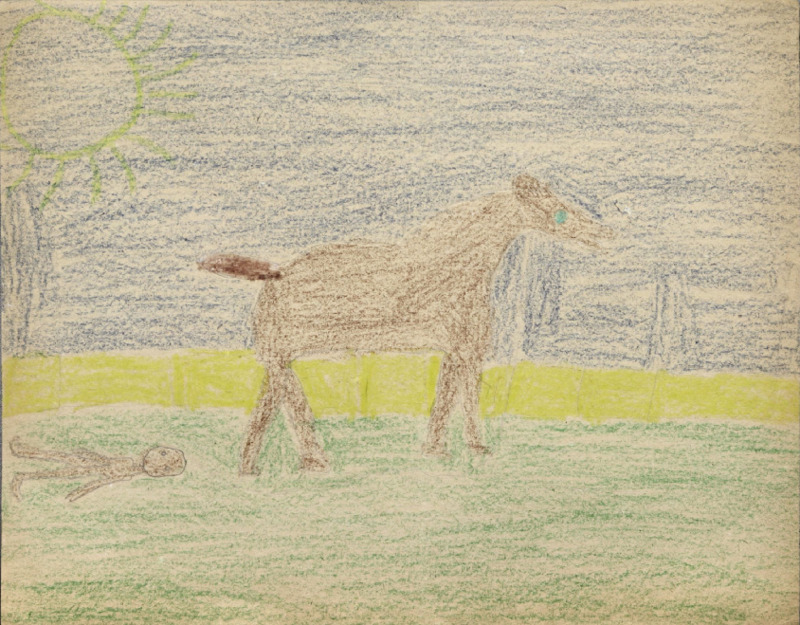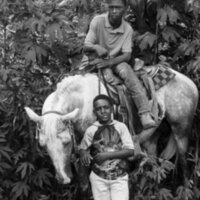Joe Pittman: A Bastion of Representation for the Black Cowboy
By Carson Strang
“I do not have a problem with there being black characters in the show because I am racist. I have a problem with there being black characters in the show because it is completely historically inaccurate.” – my acquaintance espoused while discussing the new Viking series he had been watching. See, he is a history buff and for him there is no greater sin for a show, movie, or book than for it to be inaccurate. He went on to rant about how the cowboy genre would be a great place for the representation of Blacks, as many of the original cowboys of the United States were indeed actually Black. It got me thinking: have I ever seen a Black cowboy represented in film or literature? I had watched the comedy classic Blazing Saddles and seen Cleavon Little as Sheriff Bart. I also had heard of the performance of Don Cheadle as the cowboy, porno actor Buck Swope in the infamous film Boogie Nights. These were not exactly wholesome or accurate depictions of a black cowboy to say the least. I began to think, is there an accurate depiction of a black cowboy out there?
Fast forward to me beginning to read the novel The Autobiography of Miss Jane Pittman by Ernest J. Gaines. Unbeknownst to me when purchasing the book that a main character was Joe Pittman, a Black cowboy. As I read on, from what I knew, the character of Joe Pittman certainly seemed accurate, and he did not seem to be portrayed in a terrible light. Perhaps Joe Pittman would be the answer to my question, and even be able to live up to the standard and scrutiny of my history buff acquaintance. The novel finished and many hours of research later the answer is in, and it is a resounding yes. Joe Pittman is in fact a bastion of representation for the Black cowboy, and I would like to explain why in depth.
So, how is Joe Pittman historically accurate? Well, for starters, Joe Pittman is a former slave. We know that the first cowboys in the United States were enslaved Africans. Plantations had many jobs, and for some plantations herding cattle and breaking horses was a very important job that was in high demand. Slaves were specifically brought in and highly sought after from West Africa, particularly from around the Gambia River region, because people from the region already participated in the trade and raising of horses and cattle. White owners were learning a trade from their slaves, who so often were depicted as subhuman and highly unintelligent. I imagine the black cowboy served as an interestingly yet tragically ironic situation, where the humans were learning from the “sub-humans.”
So, how is Joe Pittman a positive representation? Joe Pittman is very hardworking. Obviously, he had to be given the climate of the times. Forced as a slave and then finding himself in a life sadly not much different post being freed, hard work was integral for survival. As the novel goes on, we get a sense that a strong work ethic is integral to Joe Pittman regardless of his circumstances, because his work means so much to his character. An expert and specialist in the field of breaking horses, his craft is his means of finding pride and humanity. Joe Pittman is willing to die in his field if that is what it takes. This segways into what Joe Pittman comes to truly represent, and it is more than just a cowboy.
Regarding his willingness to literally die for his work, work which brings him humanity and purpose, Joe Pittman serves as a great symbol of the drive African Americans have for freedom at any cost. He is so symbolic in fact, that he dies at the hands of a rope wrapped around his neck in the form of horse reigns. An allusion to lynchings, Joe Pittman is killed attempting to rope what I feel is a not-so-accidently-colored black stallion. The scene is a pivotal point in the novel, that leaves a lasting effect on all. Although she might not have understood the deep symbolism, 10 ½ year old Dequetta Jackson in Mrs. Slaughters fourth grade at Walnut Hill Elementary School in Baton Rouge Louisiana summed up Joe Pittman’s death well when she titled her drawing “The horse drag the man.” As this artifact hails from the novel being taught in an elementary school, we can see the lasting impact and interpretation of Gaines’s work. When interpreting a text, we must think of the times in which it was written. We know Gaines began writing The Autobiography of Miss Jane Pittman in 1968, towards the end of the civil rights movement. This puts the character of Joe Pittman in context of the times, and I feel his symbolism as the drive for Black freedom was no accident on Gaines’s part.
So, if Joe Pittman is such a great representation of a Black cowboy, how did he come to be if many others got the portrayal so wrong? Joe Pittman must have been a real person, right? Well, to answer these questions, we must look to the author Ernest J. Gainses. It is well known that Gaines blurred the lines between fiction and reality. After all, his novel is called an autobiography. After digging through the archives at the Ernest J. Gaines center at the University of Louisiana at Lafayette, I was able to find a newspaper clipping that sums up Gaines’s “fiction” very well. Two readers write into film critic Bettelou Peterson trying to settle their bet on whether the film adaptation of The Autobiography of Miss Jane Pittman is based off a real person or not. They particularly want to know if the story is “fake.” Peterson hits them with an exquisitely written, pro-wrestling like answer in which she explains how fiction is not fake and goes on to mention how Gaines drew on many real events and experiences in his work. From this we get the sense that like so many of Gaines’s characters, Joe Pittman must have been heavily inspired by a real person or real people.
It is not too farfetched to think that Gaines might have crossed paths with some Black cowboys in his day. He grew up in Pointe Coupee Parish in Louisiana. Louisiana to this day maintains a rich culture of black and creole cowboys in the form of many trail riding clubs around the state. A trail riding club is essentially a social and cultural club in which black and creole cowboys get together, ride trails on horseback, eat, dance, swap stories. These trail riders were captured beautifully in the photography book entitled Louisiana Trail Riders by Jeremiah Ariaz. The book’s subjects serve as a modern-day example of what Gaines might have encountered, and can illustrate what a modern-day, real-life version of Joe Pittman might look like. This is where the importance of Joe Pittman’s representation really comes into play. He is a representation of a real thing that still exist; a beautiful aspect of Louisianian and American culture that has either not been represented or arguably worse, has been represented negatively. Thankfully we have the character of Joe Pittman, so exquisitely crafted by Ernest J. Gaines, to serve as a symbol of not only a true Black cowboy, but all that in which a Black cowboy symbolizes.





